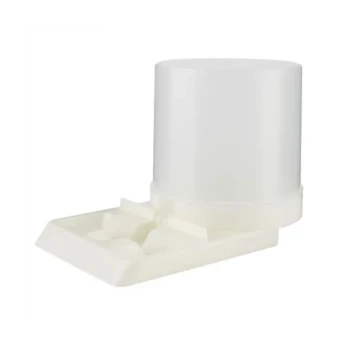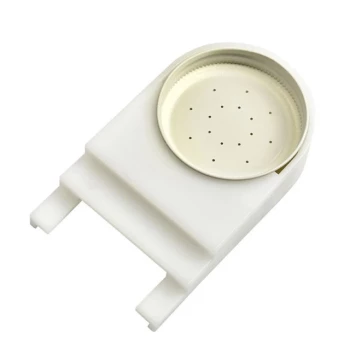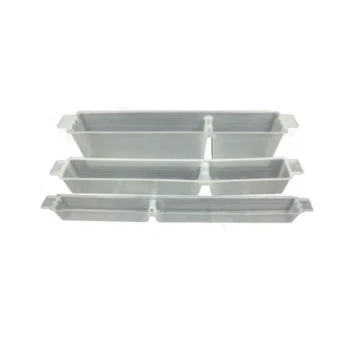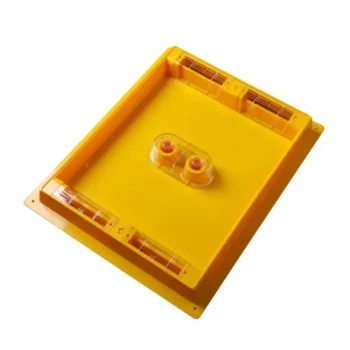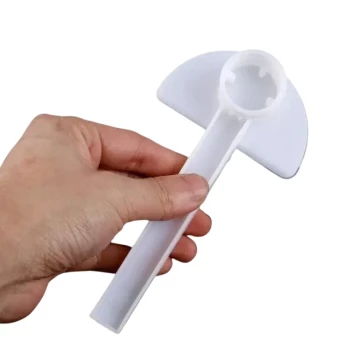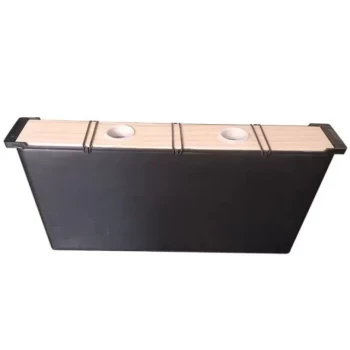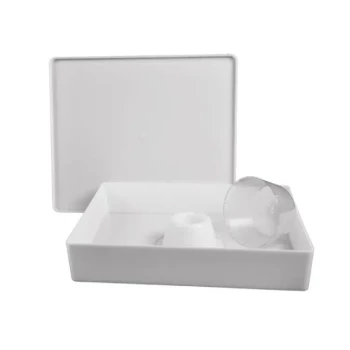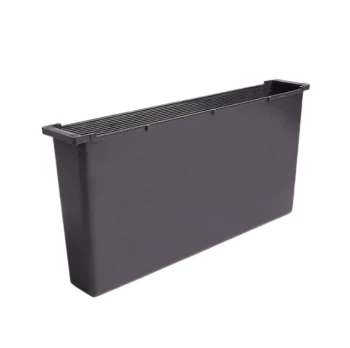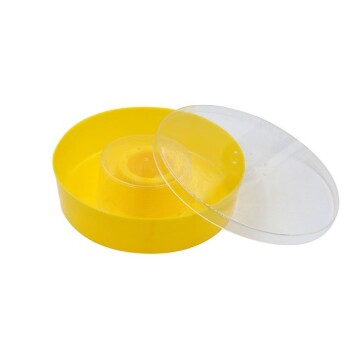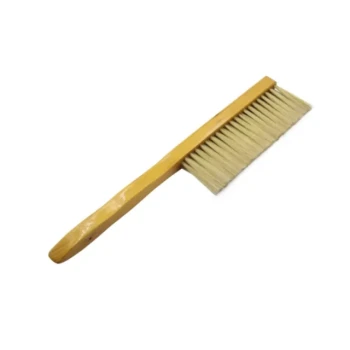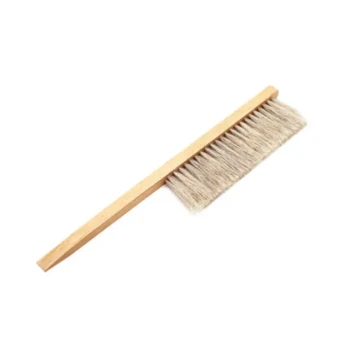The short answer is this: you should feed bees pollen only during a pollen dearth, which is a period when there is not enough natural pollen available from flowering plants. This is a strategic tool used to stimulate brood rearing and build colony population ahead of a specific challenge or goal, such as a honey flow or winter.
Pollen feeding is not a routine activity; it is a deliberate intervention. Its purpose is to boost the colony's population at a precise moment, and poor timing can create more problems than it solves by producing a generation of bees the hive cannot support.
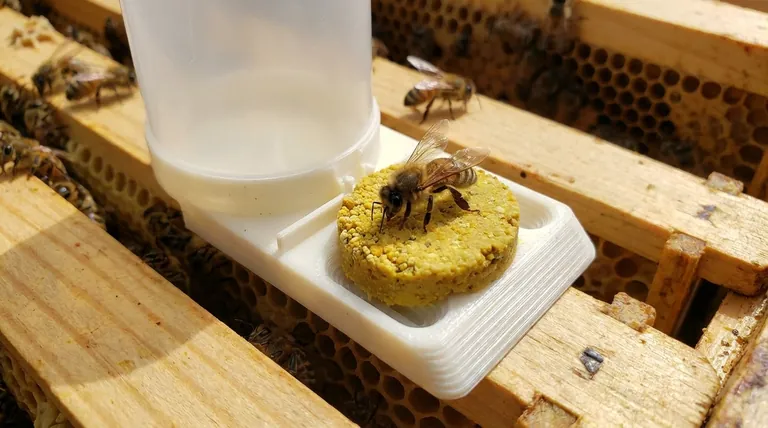
The Role of Pollen in the Hive
To understand when to feed, you must first understand what pollen does. It is the hive's sole source of protein, fats, and minerals—the essential building blocks for raising new bees.
Protein for Brood Production
Nectar and honey are carbohydrates that provide energy. Pollen is the protein that allows nurse bees to produce royal jelly and raise larvae.
Without a steady supply of pollen, the queen will slow or even stop laying eggs, and the colony's population will decline.
Identifying a Pollen Dearth
A pollen dearth occurs when bees have no natural sources to draw from. This can happen in late winter before the first blooms, during a summer drought, or in late fall after the last flowers have faded.
You can check your frames for stored pollen, often called "bee bread," which looks like a rainbow of packed colors in the cells around the brood nest. If these stores are depleted and you see no bees returning with full pollen baskets on their legs, you are likely in a dearth.
Strategic Timings for Feeding Pollen
Feeding pollen is about anticipating the colony's needs and giving them the resources to build their population for a specific purpose.
Establishing a New Colony
This is the most critical time to feed pollen. A new package or nuc has very few stored resources.
Providing a pollen patty gives them the immediate protein required to begin raising the next generation of worker bees, which is essential for establishing the colony.
Preparing for a Honey Flow
To maximize a honey harvest, you need a massive forager workforce ready the moment the primary nectar flow begins.
By feeding pollen 4-6 weeks before the main flow, you stimulate the queen to lay eggs, ensuring a population boom of foragers just in time to collect the surplus nectar.
Raising Winter Bees in the Fall
The bees raised in late summer and early fall are physiologically different; they are "winter bees" designed to live for months, not weeks.
Feeding pollen during this period, if natural sources are scarce, ensures the colony raises a large and healthy population to survive the winter cluster.
Understanding the Trade-offs: The Risks of Poor Timing
Strategic feeding is beneficial, but feeding at the wrong time can actively harm your colony. The goal is to align the bee population with resource availability.
The Danger of Feeding Too Early
Feeding pollen in late autumn or deep winter is a common and serious mistake. This stimulates brood rearing when the colony should be in a tight, conservative cluster.
These new bees will consume precious winter stores and may need to take cleansing flights in weather that is too cold, leading to dysentery and death within the hive.
Sourcing and Types of Feed
When you do feed, the quality of the supplement matters. You are what you eat, and so are your bees.
Many beekeepers use commercial pollen substitutes, which are often soy-based protein powders mixed with sugar syrup to form a patty. If using actual pollen, it must come from a reputable, disease-free source to avoid introducing pathogens to your hive.
How to Apply This to Your Goal
Your reason for feeding pollen will dictate the timing. Use this as your guide.
- If your primary focus is establishing a new package: Feed a pollen patty immediately upon installation to jump-start brood rearing.
- If your primary focus is maximizing a honey crop: Begin feeding 4-6 weeks before your main local nectar flow to build a massive forager population.
- If your primary focus is ensuring winter survival: Feed in the early fall only if you confirm natural pollen is scarce, ensuring the hive can raise a robust population of winter bees.
- If your primary focus is supporting bees during a drought: Feed only after confirming that stored pollen is depleted and no natural sources are available.
Ultimately, feeding pollen is a powerful tool for managing your colony's strength and success when used with precision and purpose.
Summary Table:
| Situation | When to Feed Pollen | Purpose |
|---|---|---|
| New Colony | Immediately upon installation | Jump-start brood rearing and establishment |
| Pre-Honey Flow | 4-6 weeks before main flow | Build forager population for maximum harvest |
| Winter Prep | Early fall, if natural pollen is scarce | Raise robust winter bees for survival |
| During Drought | Only after confirming pollen dearth | Prevent population decline |
Ready to build a stronger, more productive apiary?
At HONESTBEE, we supply commercial apiaries and beekeeping equipment distributors with the high-quality supplies needed for strategic interventions like pollen feeding. From durable pollen patty feeders to essential hive tools, our wholesale-focused operations ensure you have the right equipment to support your colonies at the perfect time.
Contact our expert team today to discuss your apiary's needs and discover how our reliable beekeeping solutions can help you achieve your goals—whether it's maximizing honey production or ensuring winter survival.
Visual Guide
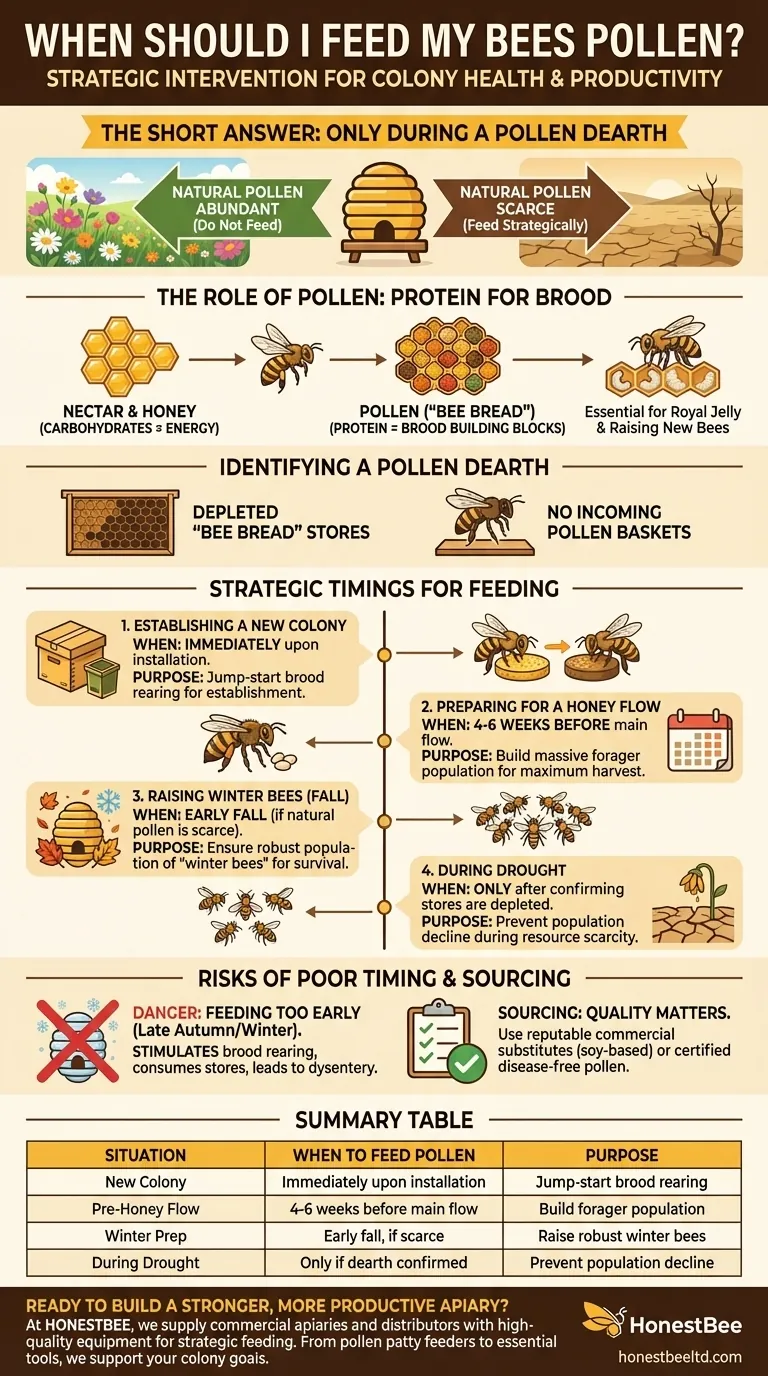
Related Products
- HONESTBEE Entrance Bee Feeder Professional Hive Nutrition Solution for Beekeeping
- Rapid Bee Feeder White Plastic 2L Round Top Feeder for 8 or 10-Frame Bee Hives
- Classic Boardman Entrance Bee Feeder Hive Front Feeding Solution
- HONESTBEE Professional Entrance Bee Feeder Hive Nutrition Solution
- In-Hive Dual Compartment Frame Bee Feeder for Targeted Colony Nutrition
People Also Ask
- How to make an entrance feeder for bees? A DIY Guide for Safe & Effective Feeding
- What is the best feeder for bees? Choose the Right Feeder for Your Hive's Success
- How do you make an entrance feeder for bees? A Guide to Safe & Effective Hive Feeding
- What is a common problem with hive front feeders? Avoid Robbing Frenzies and Protect Your Hives
- What are the different types of honey bee feeders? Choose the Right Feeder for Your Hive
